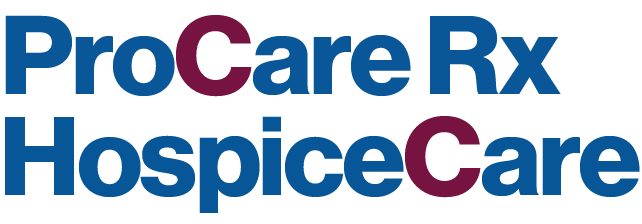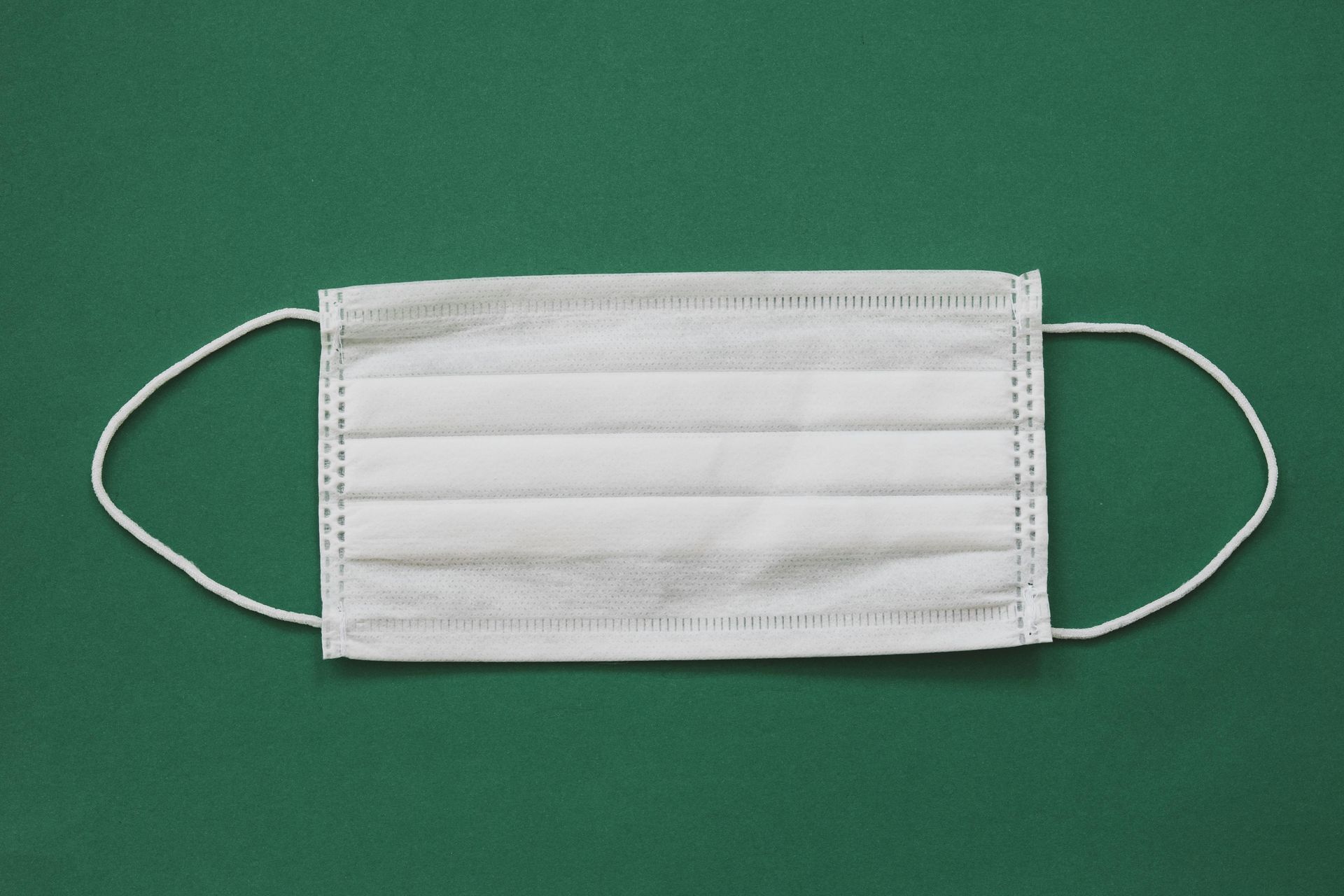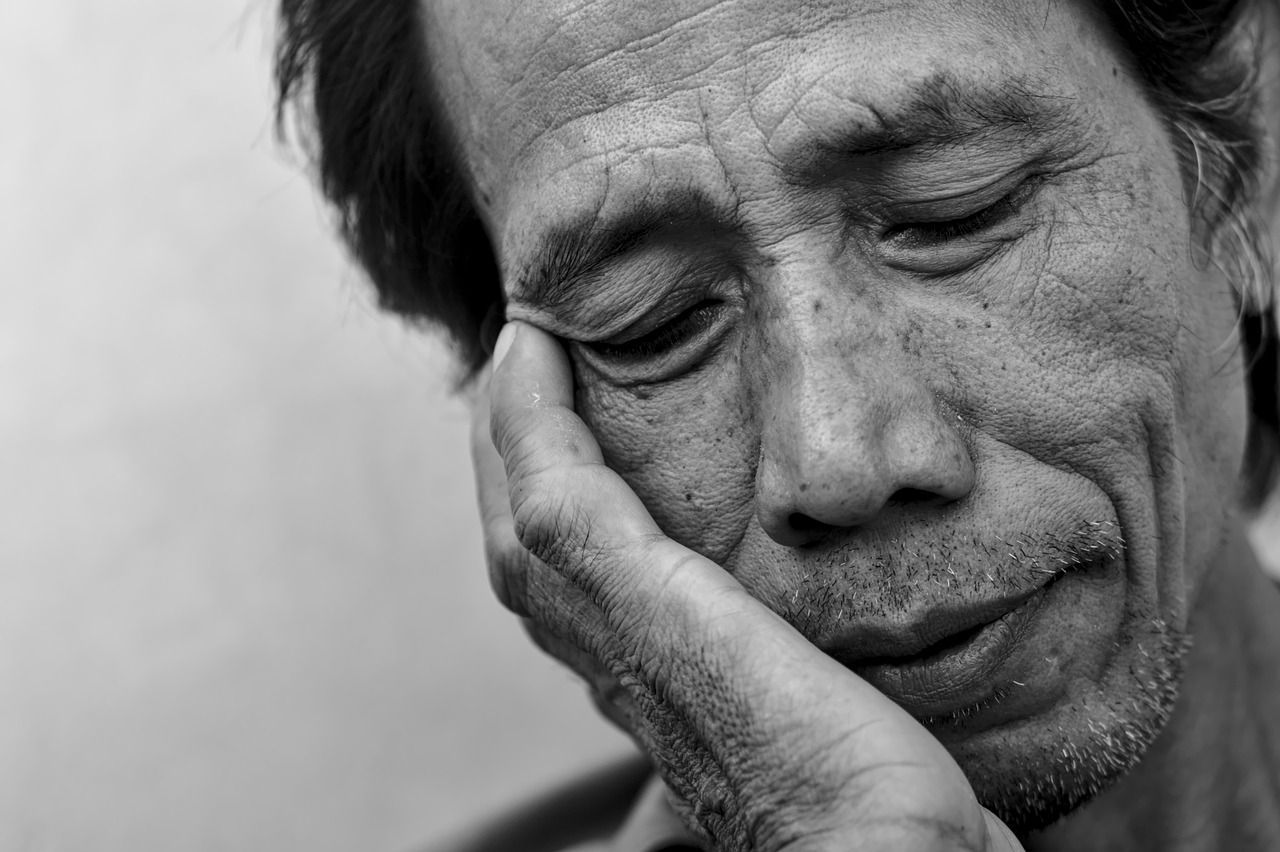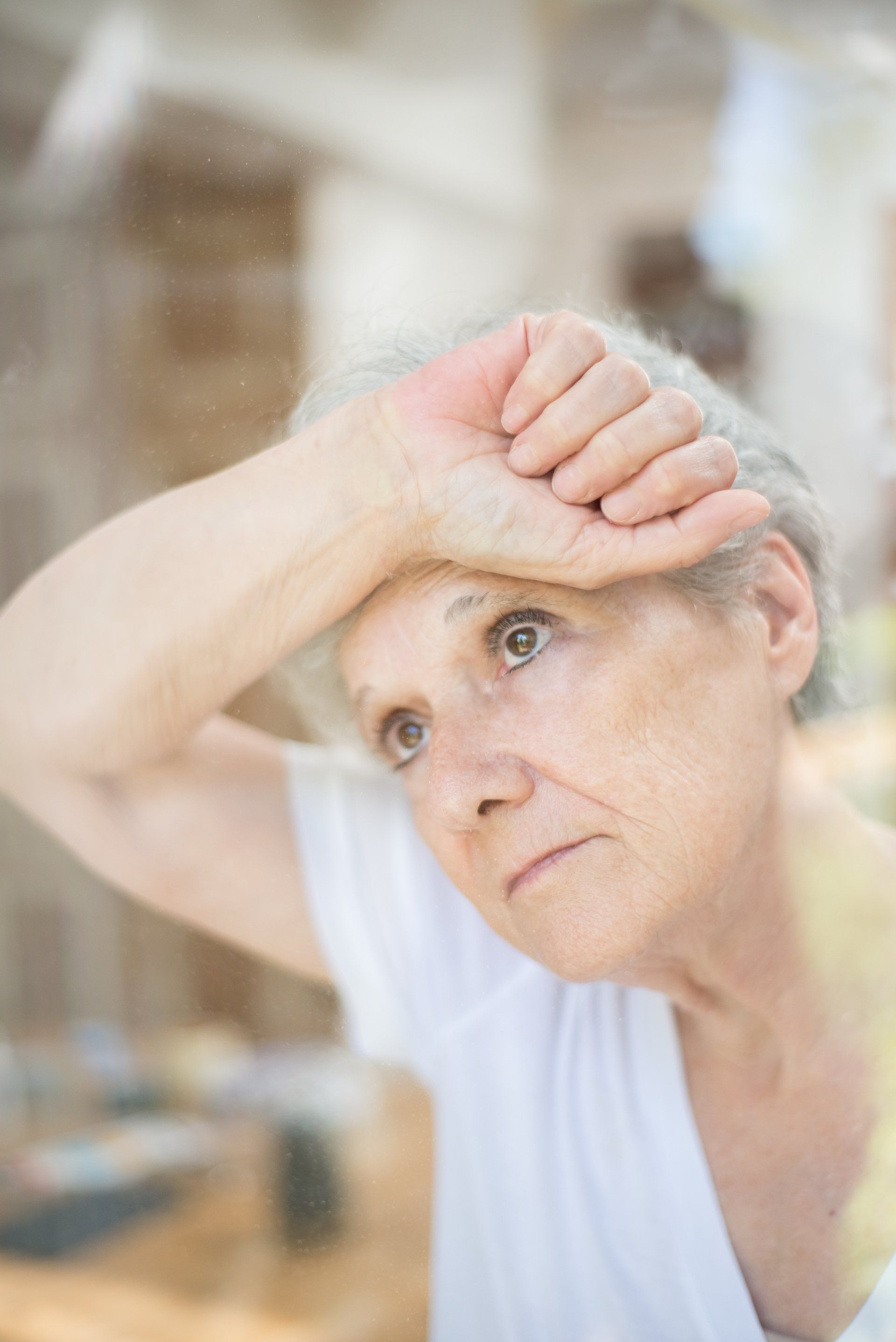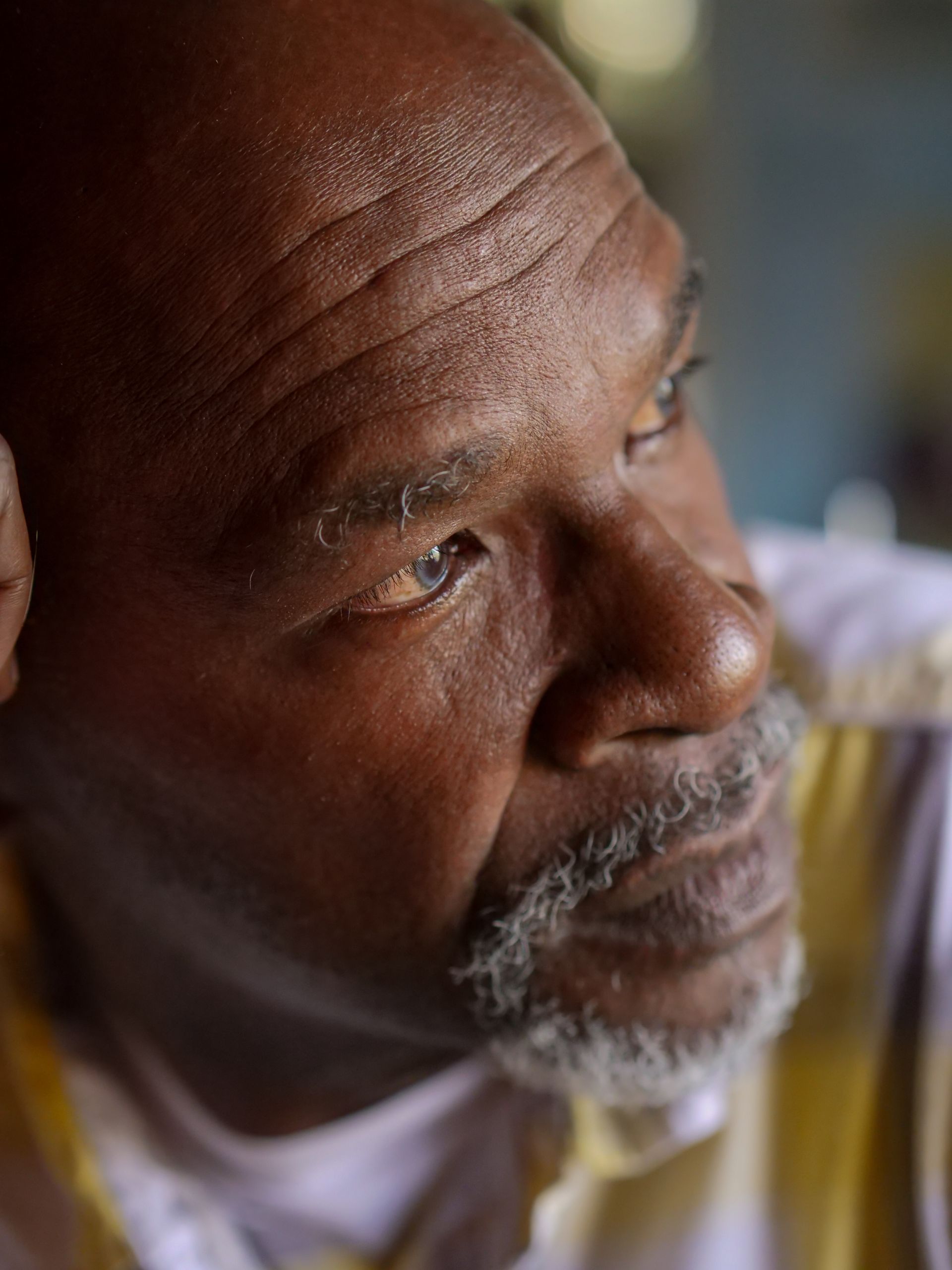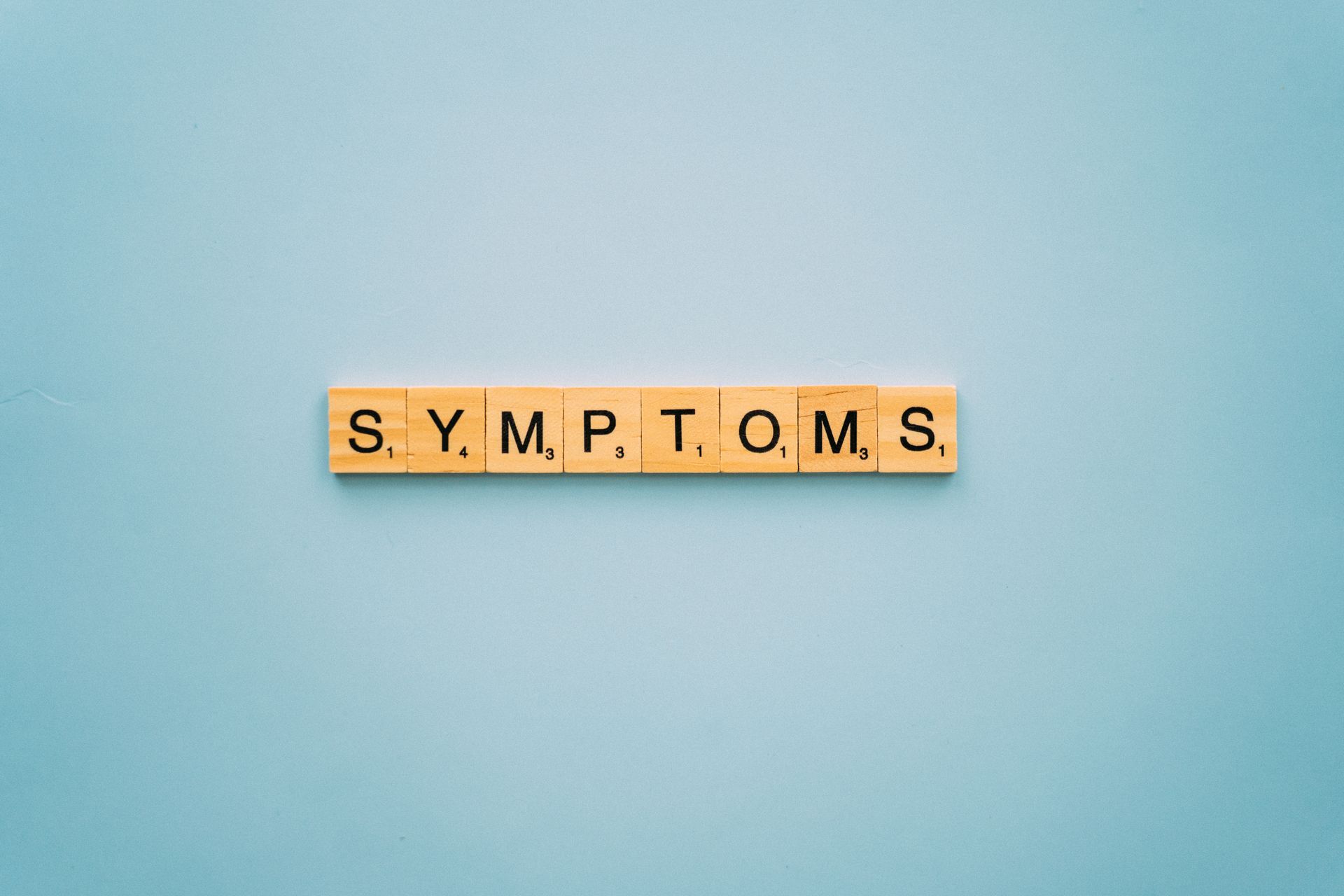Strategies for Fall Prevention in Hospice/Palliative Care
This document is for informational and educational purposes only and is not a substitute for medical advice, diagnosis, or treatment provided by a qualified health care provider. All information contained in this document is protected by copyright and remains the property of ProCare HospiceCare. All rights reserved.
By 2030, 1 in 5 Americans will be aged 65 and older and we can anticipate 52 million falls and 12 million fall injuries.

Falls occur in virtually all healthcare settings and can have devastating consequences, including serious injury and subsequent falls. The risk for falls increases exponentially with age, and greater than 1 out of every 4 older adults (65 years and up) falls each year. If more emphasis is not placed on the reduction of fall risks, the number of falls and fall injuries will keep rising. By 2030, 1 in 5 Americans will be aged 65 and older and we can anticipate 52 million falls and 12 million fall injuries.
The Joint Commission has recognized fall prevention as one of the National Patient Safety Goals®, effective July
2023 for home care programs. The Elements of Performance are listed below:
- Assess the patient’s risk for falls
- Implement interventions to reduce falls based on the patient’s assessed risk
- Educate staff on the fall reduction program in timeframes determined by the organization
- Educate the patient and, as needed, the family on any individualized fall reduction strategies
It is recommended that a fall risk assessment include a comprehensive look at past medical history (including all fall events), a review of the patient’s medication list and substance use, and a physical exam with mobility check for gait and balance when ambulating. Next steps for safety could include an assessment of current walking aids, the potential for additional walking aids/protective devices, and an environmental assessment (loose rugs, narrow walkways, etc.). When asking about the patient’s fall history, ask the tough questions of the patient and/or caregivers:
- Have you experienced fall(s) over the past year?
- Can you describe the last fall you had?
- What caused the fall to happen?

For the medication review, be on the lookout for the following:
- >5 medications (routine/PRN) increases fall risk = Polypharmacy
- # of doses/day
- Any recent medication changes including:
- Addition
- Discontinuation
- Adjustment
- Adverse Effects/Reactions
Strategies for Fall Prevention in Hospice/Palliative Care (continued)
As part of the medication review, use the SAFE approach below; identify any medications that your patient takes that may increase the risk for falls and discuss possibly tapering down or discontinuing to mitigate the risk.
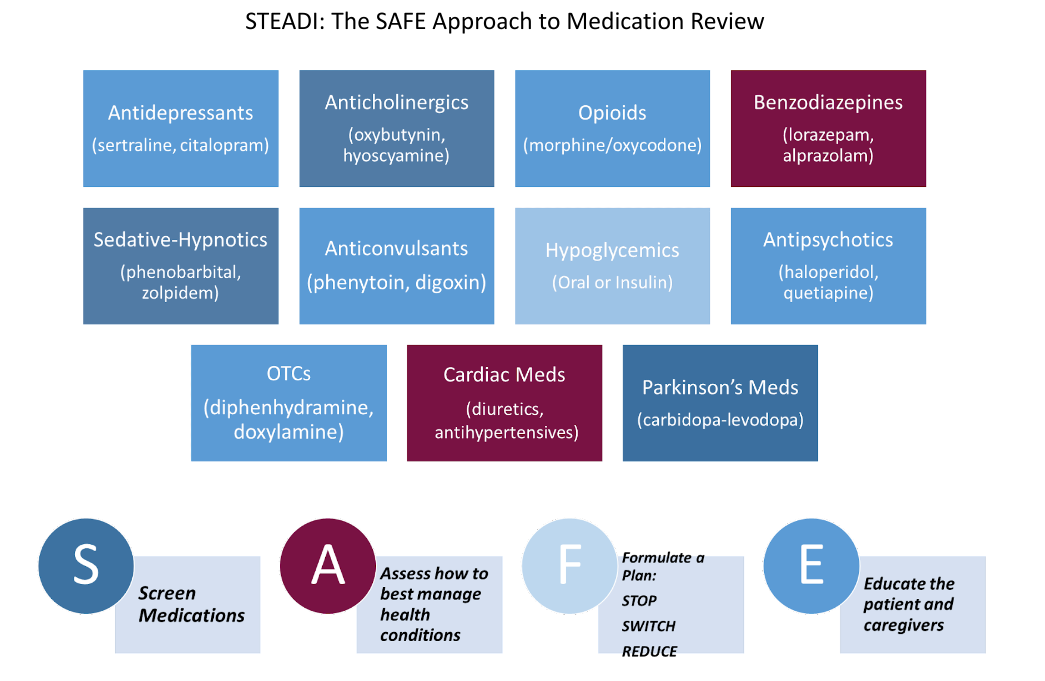
Potential Interventions to Prevent Falls for Hospice Patients:
- Fall prevention education (family, patient, IDT, facility staff)
- Recommend assistive devices (walker, wheelchair, etc.)
- Environmental changes (eliminate floor clutter and floor rugs, add grab bars in shower, etc.)
- Supervision/assistance (hospice aides at greater frequency)
- Medication adjustments (decreased dose, taper and/or discontinuation)
- Exercise programs/balance training, if able to tolerate
Recommended Fall Prevention Resources:
- ASCP-NCOA Falls Risk Reduction Toolkit: https://www.ascp.com/general/custom.asp?page=fallstoolkit
- STEADI: Stopping Elderly Accidents, Deaths, and Injuries: https://www.cdc.gov/steadi/index.html
Summary
When it comes to fall prevention in the hospice and palliative care setting, focus on taking proactive, multifactorial steps to help keep your patients safe. Education is key to the success of your fall prevention program. Involve the interdisciplinary team at every step in the process and document all steps and strides taken to ensure everyone is on the same page.

References
Centers for Disease Control and Prevention. STEADI materials for healthcare providers. http://www.cdc.gov/steadi/materials.html. Accessed May 5, 2016.
Gray J. Protecting hospice patients: A new look at falls prevention. Am J Hosp Palliat Care. 2007 Jun-Jul;24(3):242-7. doi: 10.1177/ 1049909106298721. PMID: 17601851.
Vieira ER, Palmer RC, Chaves PH. Prevention of falls in older people living in the community. BMJ. 2016 Apr 28;353:i1419. doi: 10.1136/ bmj.i1419. PMID: 27125497.
Clackum, S. Falls and falls risk inducing drugs (FRIDs). [Online] Available through subscription from: https://learning.ascp.com/diweb/catalog/item/id/9247065/sid/159926393/q/q=falls&c=305.
The Joint Commission. Home Care: 2023 National Patient Safety Goals effective July 1, 2023. [Online] Available from: https://www.jointcommission.org/standards/national-patient-safety-goals/home-care-national-patient-safety-goals/.
American Society of Consultant Pharmacists (ASCP). ASCP-NCOA Falls Risk Reduction Toolkit. [Online] Available from: https://www.ascp.com/general/custom.asp?page=fallstoolkit.
Moncada LVV, Mire LG. Preventing Falls in Older Persons. Am Fam Physician. 2017 Aug 15;96(4):240-247. PMID: 28925664.


